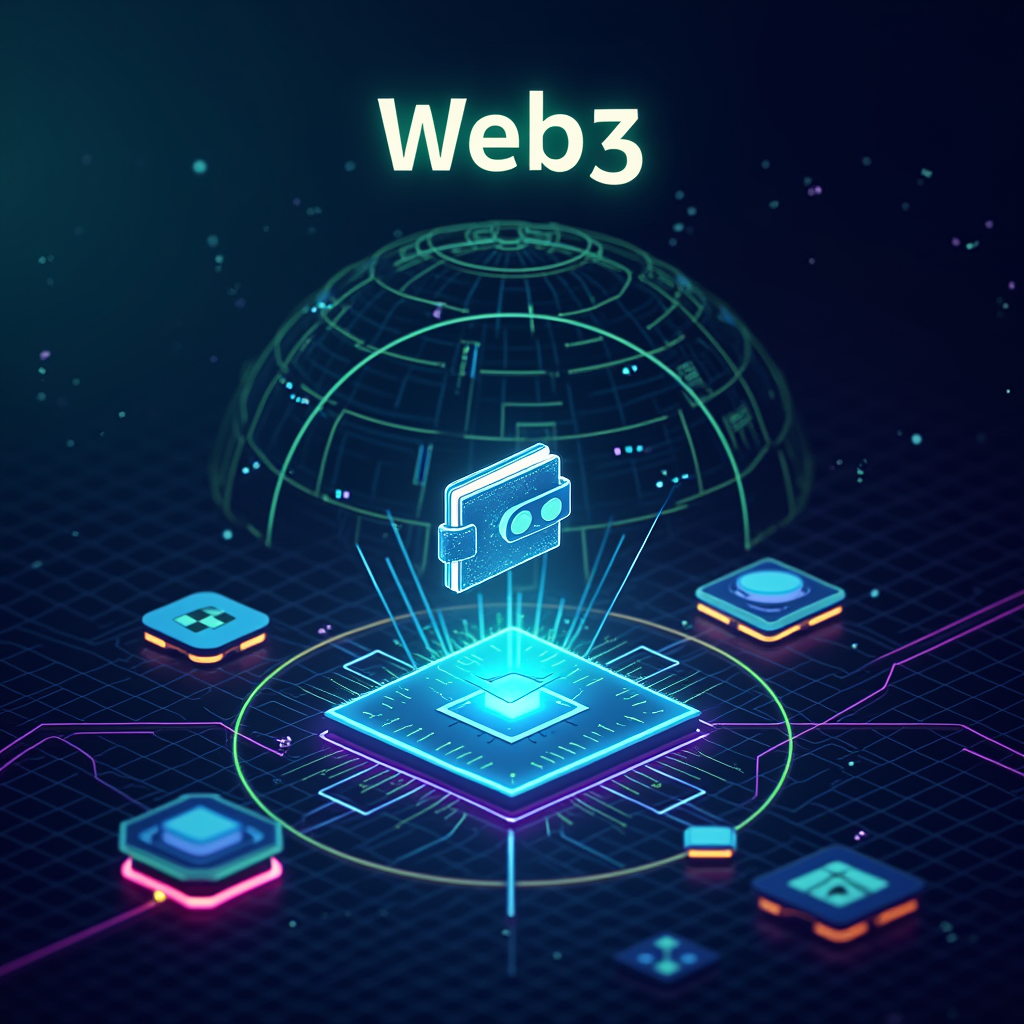Web3: A Deep Dive into the Internet’s Decentralized Future
 Samihan Chatterjee
Samihan Chatterjee
Introduction: Web3: A Deep Dive into the Internet’s Decentralized Future
The transition to Web3 marks a pivotal evolution in the internet, introducing a decentralized, blockchain-driven ecosystem aimed at addressing the shortcomings of Web 2.0. As this revolution unfolds, it promises to redefine data ownership, financial systems, governance, and the overall user experience. This article explores the core technologies, advanced concepts, applications, and challenges shaping Web3.
The Web3 Paradigm
Web3 is rooted in decentralization, shifting the internet’s architecture from centralized platforms to distributed networks. This evolution incorporates blockchain, smart contracts, and decentralized storage, offering users autonomy over their data and assets. Unlike Web 1.0’s static read-only model or Web 2.0’s centralized read-write interactivity, Web3 integrates decentralization, creating a collaborative ecosystem where users control their interactions.
Advanced Web3 Technologies
1. Blockchain and Distributed Storage
Blockchain serves as the backbone of Web3, providing immutable, secure, and transparent data management. Complementary technologies like IPFS (InterPlanetary File System) and Filecoin offer decentralized storage solutions, enabling efficient, tamper-proof file sharing. These technologies ensure data integrity, prevent single points of failure, and eliminate reliance on centralized servers.
2. Smart Contracts
Smart contracts are autonomous, self-executing agreements encoded on the blockchain. They facilitate trustless interactions, powering applications like supply chains, decentralized finance (DeFi), and decentralized autonomous organizations (DAOs). Ethereum’s smart contract capabilities exemplify how programmable logic enhances blockchain functionality.
3. Decentralized Communication Networks
Protocols like IPFS and Layer 2 solutions optimize communication and scalability. Technologies such as rollups (Optimistic and ZK-rollups) and sidechains enhance transaction throughput and reduce costs while maintaining security.
4. Decentralized Artificial Intelligence (AI)
Integrating decentralized AI and federated learning into Web3 facilitates secure, privacy-preserving computation. AI models can be trained collaboratively across decentralized networks, empowering applications in personalized services, secure data sharing, and complex decision-making.
Applications in the Web3 Ecosystem
1. Decentralized Finance (DeFi)
DeFi reimagines traditional financial systems, offering borderless, permissionless services. Peer-to-peer lending, staking, and tokenized assets allow users to interact without intermediaries, ensuring inclusivity for unbanked populations.
2. Non-Fungible Tokens (NFTs)
NFTs enable unique digital ownership, benefiting artists, gamers, and collectors. Unlike fungible tokens like Bitcoin, NFTs represent distinct assets, providing a foundation for digital collectibles, identity systems, and intellectual property management.
3. Decentralized Autonomous Organizations (DAOs)
DAOs are blockchain-governed entities that democratize decision-making. By leveraging governance tokens, members collaboratively manage resources and projects, redefining organizational structures across industries.
4. The Metaverse and Web3 Integration
Web3 provides the foundational technologies for the Metaverse, enabling digital identity, asset interoperability, and decentralized economies. Together, they create immersive, user-owned virtual environments that blend creativity with economic opportunity.
Challenges in Web3
1. Scalability and Efficiency
Blockchain’s "Impossible Triangle"—balancing decentralization, security, and scalability—remains a challenge. Layer 2 solutions, sidechains, and innovative consensus mechanisms aim to address these issues but require further refinement.
2. Security Risks
Despite its robustness, blockchain is not immune to attacks. Vulnerabilities such as 51% attacks and smart contract exploits pose significant risks. Additionally, phishing and user mismanagement of digital wallets highlight the need for better education and secure interfaces.
3. Regulation and Privacy
Web3’s decentralized nature complicates regulatory frameworks. Privacy-preserving technologies like Secure Multi-Party Computation (SMPC) and Trusted Execution Environments (TEE) can help balance compliance and user confidentiality.
A New Hierarchy of Needs in Web3
Inspired by Maslow’s theory, Web3 introduces a novel hierarchy of needs:
Foundational Technologies: Blockchain and distributed storage ensure secure infrastructure.
Privacy and Security: Tools like SMPC and TEE protect user identity and assets.
Personalized Services: AI and big data provide tailored solutions in education, healthcare, and entertainment.
Economic Models: DeFi and decentralized economies enable fairer profit distribution.
Social Belonging and Creativity: DAOs and NFTs foster collaboration, empowerment, and individual expression.
Future Directions for Web3
Advanced Applications: Web3 is poised to revolutionize industries like healthcare, education, and urban governance through DAOs and decentralized solutions.
Energy Efficiency: Innovations like Ethereum’s shift to Proof of Stake and ReFi (Regenerative Finance) tackle blockchain’s environmental impact.
Enhanced Security: Improved wallet interfaces, better cryptographic protocols, and security-focused blockchain designs are critical.
Expanding the Entertainment Industry: Gaming, virtual reality, and AI-generated content offer intuitive avenues for user engagement and Web3 adoption.
Conclusion
Web3 is not just an iteration of the internet; it’s a reimagination of digital interaction. By returning ownership and control to users, it disrupts existing monopolies, fosters innovation, and creates a more equitable online ecosystem. While challenges persist, the synergy of advanced technologies and decentralized principles propels Web3 toward becoming the internet of the future.
For developers and enthusiasts, Web3 offers a vast landscape of opportunities to build, innovate, and contribute to a fairer, smarter digital world.
Subscribe to my newsletter
Read articles from Samihan Chatterjee directly inside your inbox. Subscribe to the newsletter, and don't miss out.
Written by

Samihan Chatterjee
Samihan Chatterjee
Huh ?